step 1: analysis of status quo and change intentions
Change Leadership is the planned and controlled adaptation of companies to meet the ever faster changing challenges of customers and markets in the 21st century. Change Leadership is based on not simply accompanying the necessary internal change of a company (change management in a broad sense), but actively promoting this change and steering it to success through targeted management mechanisms.
In order to become and remain successful as a company, the internal organization and processes must change again and again - against the system-immanent inertia forces that can arise from career considerations, departmental selfishness or even the proud defense of what has been achieved so far.
In this context, the American Harvard professor and leadership expert Joseph P. Kotter has rendered outstanding services in researching the reasons for the high failure rate in corporate change programs. In his book "Leading Change", which has received broad global attention, he identified in an 8-point program the key factors that must be actively led and promoted by management as a change leadership program in order to make an entrepreneurial change process successful.
We at Thought Leader Systems build on Kotter's concept of Change Leadership when accompanying change processes in companies and can confirm from practical experience that the implementation of all 8 factors of Change Leadership is critical to success in order to make change processes successful and sustainable.
Here are the eight points of Change Leadership to get to know in a quick run-through:
It makes sense to work out strategic goals, to include and critically question past developments. But how exactly can companies align the thoughts and actions of their employees in such a way that the necessary change not only takes place within the company, but even accelerates the development of the company through the right leadership?
Change Leadership deals with all systemic, organizational and process-related influencing factors of change processes in companies - especially with the possibilities for activating and involving people in key positions as change leaders of the company.
The goal of Change Leadership is to create a suitable environment for change and to involve the entire team in the company in order to enable, facilitate and influence change in the company in a targeted and long-term manner in the desired direction.
Change Leaders are the personnel, steering and driving force behind the change in the company and the change management process used. Convincing and inspiring change leaders, flanked by a targeted change leadership program, achieve more than just change in the company - they visibly and sustainably advance the success of many companies.

Change Management views the intended change in companies as a purely process-related process - i.e. as a project for change with planned process steps. Change processes are observed and kept under control with regard to their costs and effects on corporate efficiency.

Change Leadership considers change in the company in terms of processes, personnel and above all emotionally. Change Leadership wants to actively shape change by inviting and motivating all parties involved to make their own contribution to the change. The focus of change is less on control and more on the commitment of the team and its leaders as change leaders.
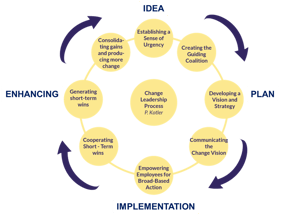
Change leadership must be well thought out and carried out with care and attention to detail at every stage. In order to maintain an overview and optimally coordinate the planned measures, a process-related view of the Change Leadership approach is required. It is important to note: If you try to end a phase prematurely or even skip it, this will have a negative impact on the entire course of the change and the success of your Change Leadership Program.
To ensure that the whole company goes through the change and to achieve sustainable success, it is recommended to follow the Change Leadership approach step by step.
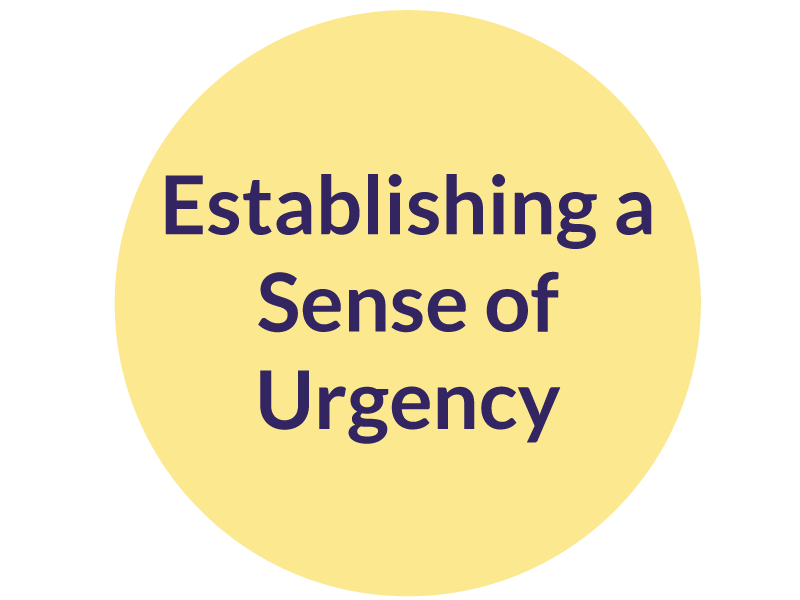
At the beginning of a Change Leadership process there is the need to solve an important cultural or organizational problem of the company.
This ranges from simple changes in departments or divisions to the fundamental reorientation of entire companies in the event of a merger, the sale of parts of the company or a change program to reorganize, reduce costs or increase sales.
The entire company - and above all the decision-makers with personnel responsibility - must actively shape a change process so that the company is strengthened rather than weakened.
The process of change leadership begins with the status analysis. Use data from all internal and external stakeholders (e.g. finance, HR, works council, associations, analysts) and look at the entire ecosystem of your company to discover the greatest weaknesses in the company's development and initiate a corresponding change process. An independent and experienced external partner such as Thought Leader Systems can be helpful in this analysis process.

Before starting your Change Leadership Initiative in your company, identify the key people whose influence, expertise and credibility can significantly advance the change process.
Then build trust among the Change Leader Team, which you have put together with the decision-makers, through group activities. The team must stand firmly for a common goal, bring its full support and be able to work together without conflict, i.e. without departmental egoisms or the profiling addiction of individual team members.
Management competence and leadership qualities are particularly important in this team so that the Change Leadership Program can be implemented with tight and prudent leadership. The Change Leaders team may initially consist of a handful of people, but in large companies it can quickly grow to 20 to 50 people.
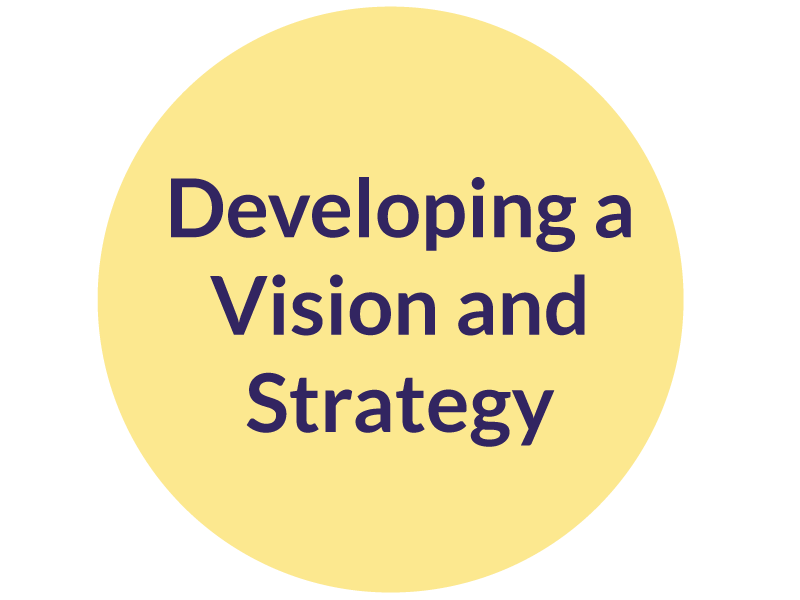
Develop a precise picture of the future with the core team and make this target picture plausible and desirable. The vision promotes a common understanding of the change approaches of all those involved and enables all activities to be aligned with this goal.
Concrete strategies, plans for implementation and also the necessary budgets for your Change Leadership Program are derived from it.
In this way, the change project is also turned into a financially calculable project and provided with operationalized, measurable goals.
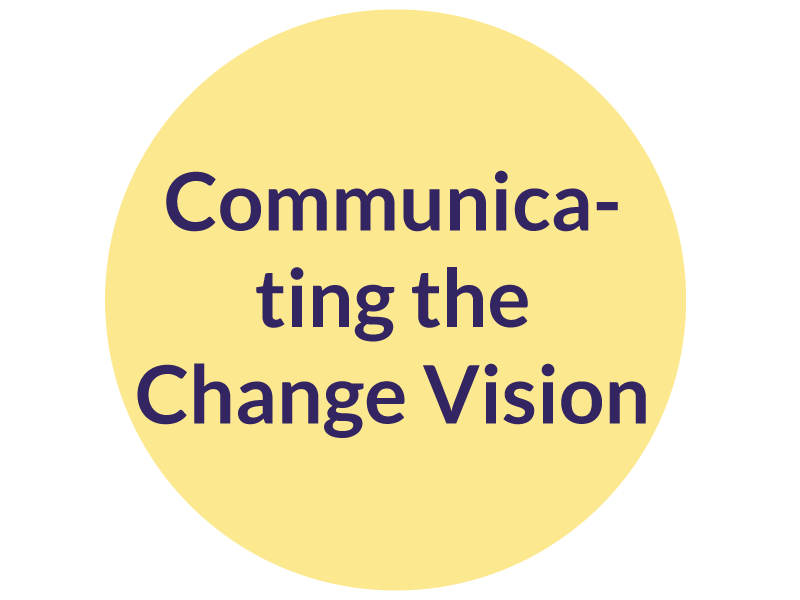
The great challenge of change leadership is not only to inform the entire company about the vision, but also to let each individual actively participate in the realization of the goal. You communicate your target image in written and graphic form - using a wide variety of media such as brochures, blog posts, articles in the company magazine, speeches in meetings and assemblies and last but not least videos with the necessary corporate messaging.
Design the implementation of the change vision in text, images and graphics in such a way that the information needs, interests and experience horizon of the internal target groups are precisely met. Among the most important design elements in the implementation are
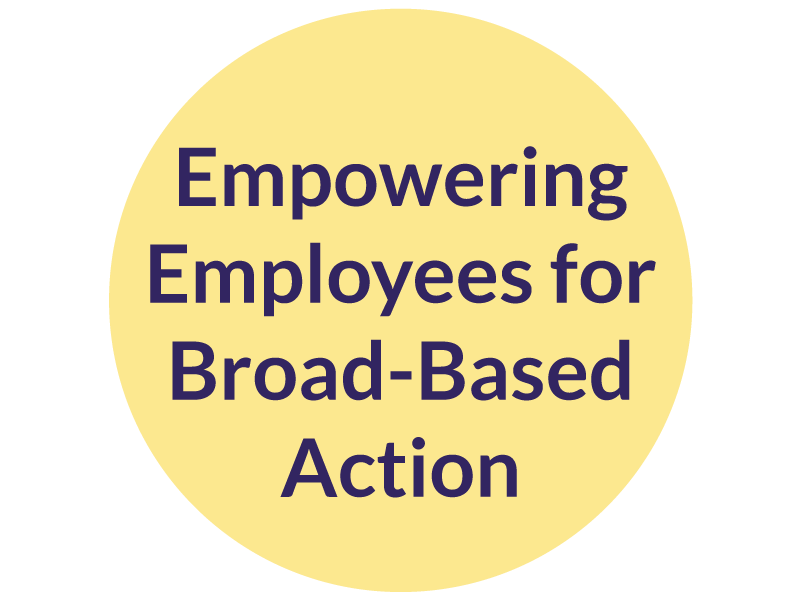
Obstacles that arise during the implementation of the change vision usually have the following origins:
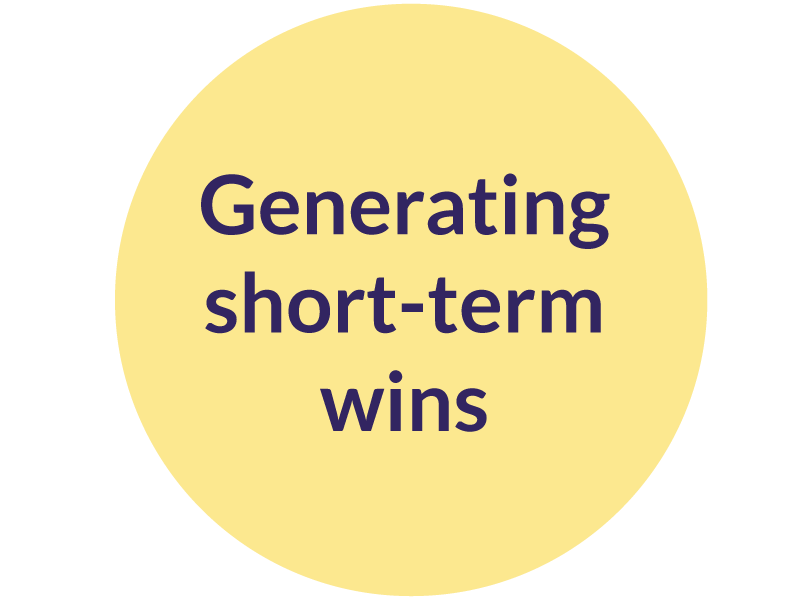
Change leadership processes can be long. The path to change leadership requires foresight and perseverance. Daily business must not suffer from the change process or the capacities of internal change leaders reserved for it. Performance targets must be met and business objectives must continue to be met or exceeded on a monthly and quarterly basis.
Set goals for your change leadership and change management process that make your progress visible and unmistakable. Change Leaders benefit from such goals. Goals allow you to fine-tune the change vision and change measures.
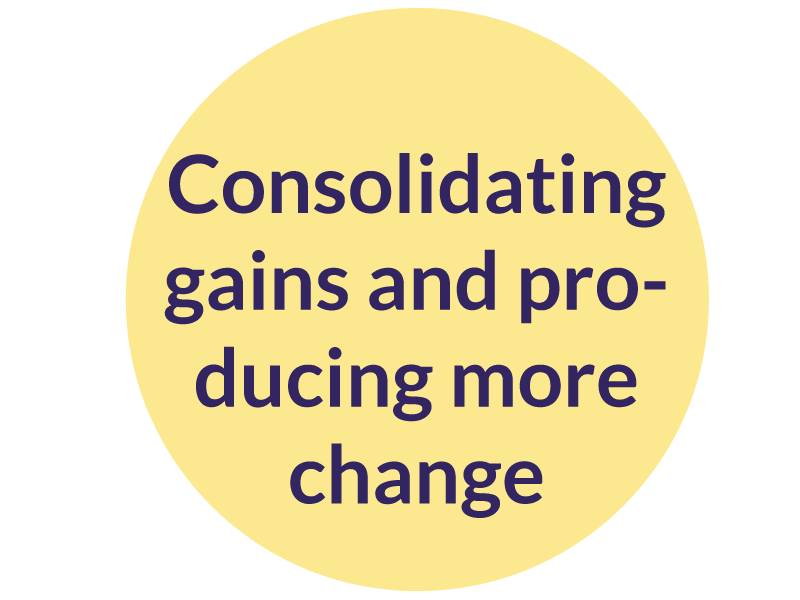
Use the momentum you have built up to look ahead in the change management process once you have reached the first intermediate goals. On the way to fulfilling your Change Leadership Vision, the members of your team will notice many more things that should be optimized and contribute to the success of the overall project.
The senior management of the Change Leaders helps to keep track of the performance of the ongoing change measures. The jointly addressed change processes are coordinated and implemented in sub-teams. Change becomes a natural part of everyday life with the increasing professionalization of your Change Leadership.

In order to maintain a sustainable change in the company, the last step of the Change Leadership Process is to change the corporate culture accordingly.
A corporate culture manifests itself in the recruiting of new employees, in the induction of new team members and in daily interaction in all areas of the company. Even after several years of Change Leadership programs, laboriously fought for behavioral changes of a corporate culture can lose their effect within a very short time.
In order to consolidate the achieved change as part of the further developed corporate culture, old structures must be acknowledged, but presented as outdated and therefore inappropriate. In this phase, contradiction and reactance can arise in the ranks of long-standing employees.
In order to be prepared for the future, key positions must be filled throughout by employees who have helped shape the change that has been achieved, who now defend it and who remain open to further change processes.
Change Leadership lives from the continuous focus on the necessary change in the company. Change leadership can never be thought of from processes but must be thought of by people. In the change process, new information, obstacles, and surprises literally emerge every day. Remember: the truth is that with Change Leadership you will not change a company, but the people who work in it.
At Thought Leader Systems we have learned that in the course of a Change Leadership process it is crucial to uncover interpersonal disagreements between people so that conflicts or delays in the Change Leadership process are resolved as quickly as possible.
This results in four major management challenges in day-to-day business in particular: addressing underlying conflicts within the company, demanding personal responsibility, the willingness to invest in new personal and organizational skills and - last but not least - the continuous and lifelong learning of individuals and teams within the company.
Take up subliminal conflicts in the company as soon as you recognize them. These conflicts can be factual or can manifest themselves on the personal level of the people involved. Check whether the resulting problems jeopardise the basic work of your Change Leadership Initiative or jeopardise the achievement of the absolutely necessary quick wins.
Thought Leader Systems supports companies in decisive transformation phases in building up internal change leadership. we consider it our task and our claim to provide a company with the best possible support and objective recommendations for action in all phases of the change leadership process.
Our external support of change leadership programs is divided into 5 ideal-typical process steps: from situation analysis and planning to implementation and continuous anchoring in the corporate culture and in all functional areas of the company.
step 1: analysis of status quo and change intentions
step 3: work out detailed action plans and execution of communication instruments
step 4: provide support during the entire implementation process
step 5: provide long-term support and monitor progress
About TLS
Contact
Newsletter